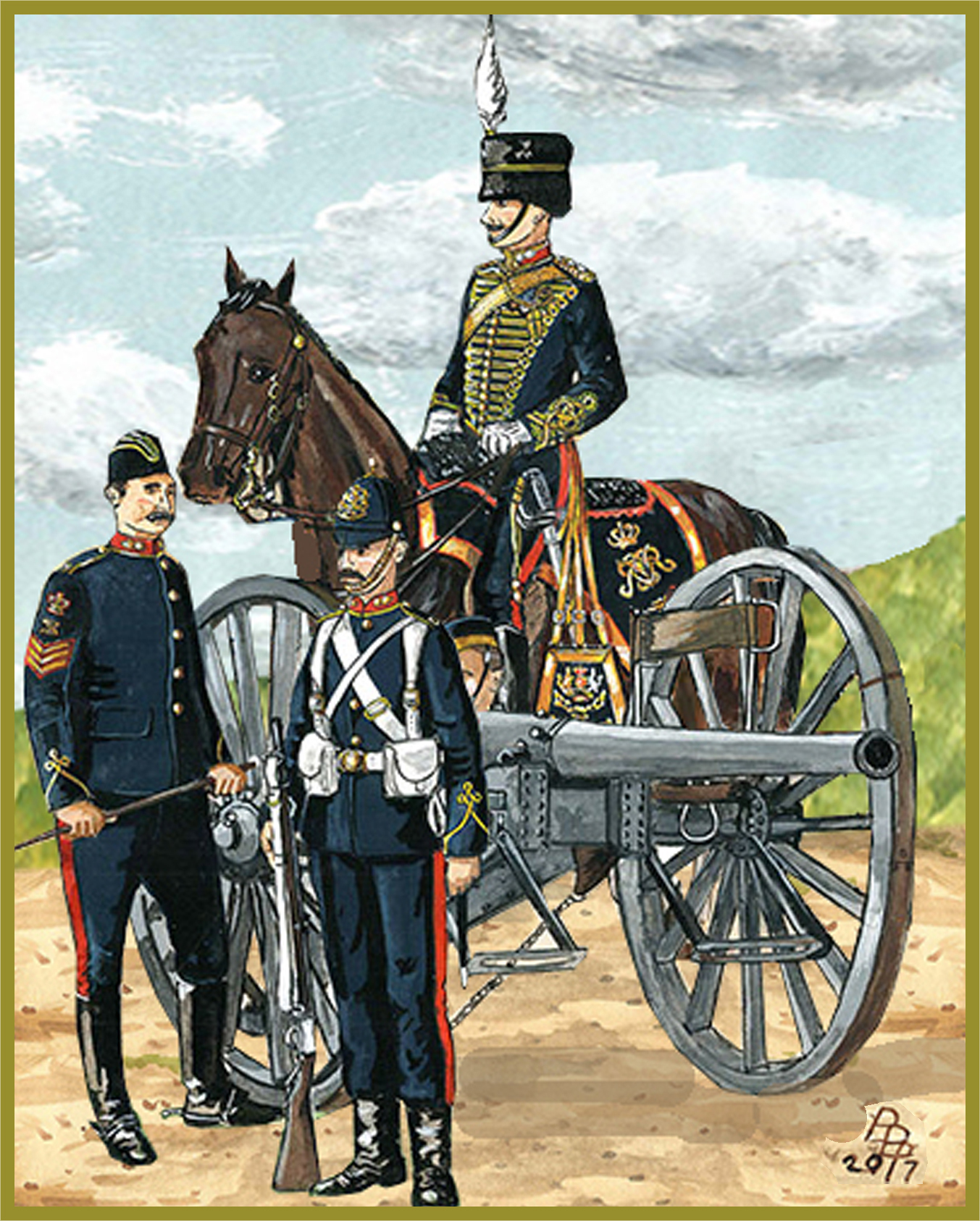Queen Victoria's Armed Forces
1881-1902
THE ROYAL REGIMENT OF ARTILLERY
1881-1902
Various forms of artillery have been a feature of the battlefield since the 12th century in China and the middle ages in Europe. Like the Roman catapults before them, they were primarily employed against castle and fortress walls. By the sixteenth century, the art of gunnery was becoming an important skill in many of the world’s armies.
In England, trains of Artillery were part of the armies in the field since the time of Henry VIII and their equipment was already under the control of the Master of the Ordnance (created 1415). During the English Civil War, their use in the various sieges became an important element determining victory or defeat. For the first time, cannon were also used against opposing troops, but range and field of fire were limited. The wars of the Grand Alliance and the Spanish Succession further enhanced the role of artillery. James II authorised an Ordnance Regiment to guard the train. This became the Royal Fusiliers who until recently, made their headquarters at the Tower of London.
On 26th of May 1716 two companies of Artillery were permanently established at Woolwich. In 1720, the regiment was styled “Royal Artillery”. On April 1st the regiment combined with the companies at Gibraltar and Minorca to form the Royal Regiment of Artillery. The number of companies were increased steadily during the 18th century and by 1771 there were four battalions each consisting of 8 companies along with 2 Invalid companies for garrison duty. The Royal Horse Artillery was created in 1793 and first saw action during the French Revolutionary War in 1799.
From this time, the Royal Artillery took part in every conflict, large or small that involved the British Empire. In 1833 William IV granted the regiment the motto “UBIQUE” (Everywhere) and “QUO FAS ET GLORIA DUCUNT” (Whither Right and Glory Lead). At the same time, the badge of the Gun and Mottoes with the Royal Arms, later a crown, above, was established. The privilege of regarding the Guns as the Colours and receiving the same honours also became the practice.
In 1859, the organisation of Brigades and Batteries replaced the battalions and companies and in 1861 they absorbed the Artillery of the Bengal, Madras and Bombay armies following the Indian Mutiny. At this time the Royal Artillery consisted of 73 Field batteries, 29 Horse batteries and 88 Garrison batteries. Between 1877 and 1882, the Field and Garrison Artillery were rearranged from 25 Brigades into 6 brigades of the former and 5 Brigades of the latter. In 1882, the batteries of the six Field brigades were regrouped into four brigades and those of the Garrison Artillery into 11 brigades.
This organisation remained stable until 1899 when the Royal Garrison Artillery was established by Royal Warrant as a separate Corps from the Royal Field Artillery and Royal Horse Artillery. Their mission was to man the coastal defences. The Mountain Batteries and Siege Batteries were also absorbed into this organisation.
THE ROYAL REGIMENT OF ARTILLERY
UNIFORMS, ARMS & EQUIPMENT


